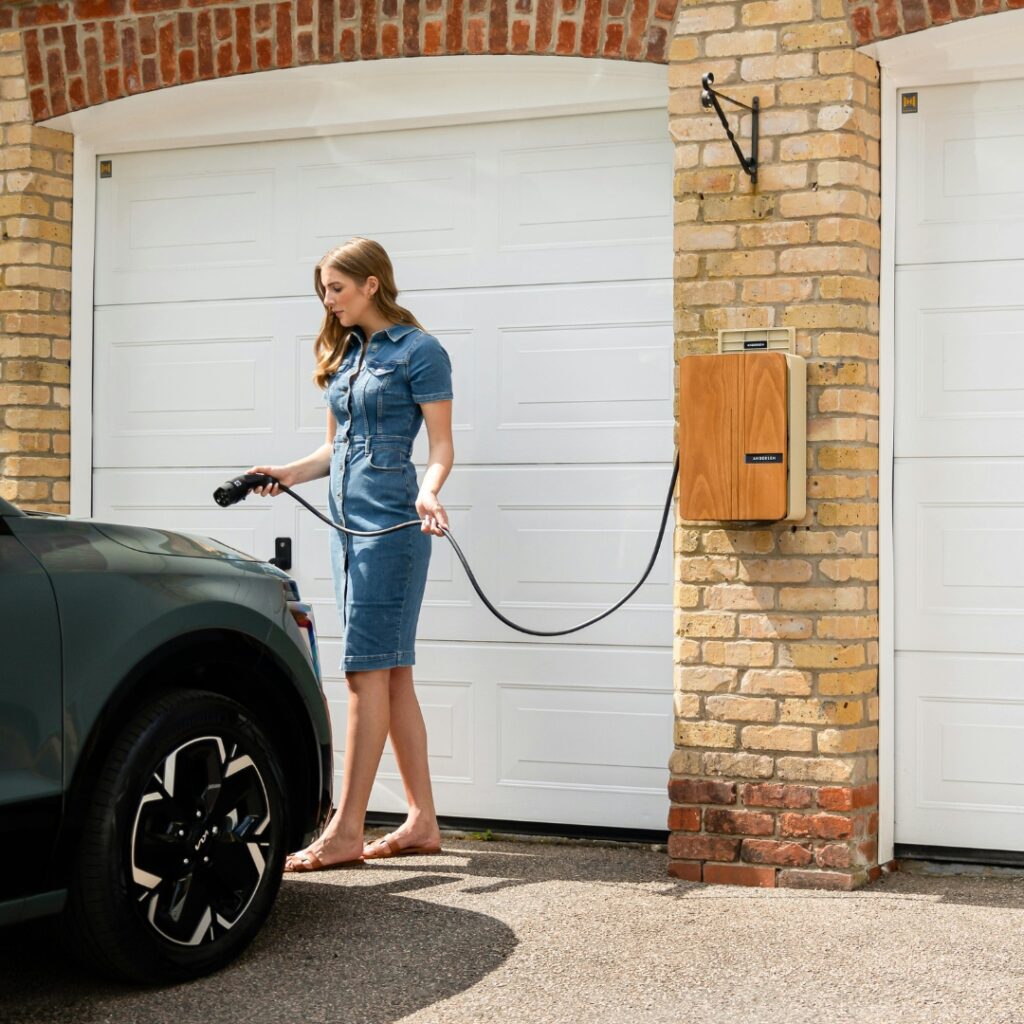
As electric vehicles (EVs) become a more common sight on Colorado roads, many homeowners are looking to bring the charging station experience home. But before you install that sleek Level 2 charger in your garage, there’s a critical question to consider:
Can your current electrical panel handle the extra load of an EV charger?
A growing electrical load can overwhelm outdated systems, especially in homes with older distribution boards, aging electrical wiring, or minimal amperage capacity. To ensure both safety and efficiency, it’s essential to assess your home electrical system before installation.
Step 1: Understand Your Electrical Panel’s Capacity
Your electrical panel (often referred to as a breaker box) controls how electric power is distributed throughout your home. Most homes are equipped with either a 100-amp or 200-amp panel, each with a different threshold for electric current and connected circuit breakers.
If your panel is older, it may not comply with the National Electrical Code or might suffer from corrosion, leakage, or voltage drop issues. Common signs that your panel may be nearing its limit include:
Frequently tripped circuit breakers
Dim or flickering lighting
Hot-to-the-touch panel or outlets
Limited room for new breakers
Upgrading from 100 amps to 200 amps provides increased electrical energy capacity, which supports not only EV charging but also modern air conditioning, heat pumps, or future solar power installations.
Step 2: Know Your EV Charger’s Requirements
Installing a Level 2 EV charger isn’t just plug-and-play. These systems require a dedicated 240-volt circuit, which adds substantial demand to your electrical network. Here’s what you need to know:
Charger Type Power Output Approx. Charging Time
Level 1 1.4–2.4 kW 8–16 hours
Level 2 3.6–19.2 kW 3–5 hours
The higher the amperage (typically 30 to 50 amps), the more pressure on your electric power distribution system. Combine that with an already demanding home (e.g., electric stove, HVAC, or plumbing systems that rely on electric pumps), and your panel could be in trouble without an upgrade.
Step 3: Panel Upgrade or Load Management?
A 200-amp electric panel may be the most future-ready option, especially if:
You plan to install a Tesla Wall Connector, Autel Maxi Charger, or ChargePoint system.
Your home has limited available breakers or older fuse-based panels.
You’re preparing for other home improvements like home automation, heat pump upgrades, or solar energy systems.
However, if your electrical contractor finds that your load is borderline, you might benefit from a load management system. These smart devices monitor real-time electricity consumption and optimize EV charging without exceeding system capacity—no full panel upgrade required.
Step 4: Choose the Right Installer
Installing an EV home charger isn’t just a matter of plugging in. It involves proper electrical conduit setup, following SAE J1772 standards, and ensuring all electric potential, ground, and voltage requirements are met. At Positively Charged Electric, we:
Perform in-depth electrical safety inspections
Confirm your panel is compliant with the National Fire Protection Association
Assess risks like short circuits, arc faults, and overvoltage
Provide comprehensive support from site inspection to final warranty
We work with premium equipment including Tesla chargers, Wallbox Pulsar, and Siemens Versicharge, and we back all our work with full regulatory compliance and transparent pricing.
Call Positively Charged for Your EV Charger Installation
If you’re not sure whether your electrical panel can handle the electrical load of an EV charger—or if you know you’re due for an upgrade—Positively Charged Electric is here to help.
Our team of certified electricians serves the Denver metro area, offering expert consultation, seamless permitting, and safe installation of Level 2 EV chargers from the most trusted brands. Let us future-proof your home, your vehicle, and your peace of mind.
Call us at 720-327-4525 or schedule your estimate online today.
FAQ: EV Charger & Panel Compatibility
1. Do I need a 200-amp panel to install an EV charger?
Not always, but it depends on your current usage. Homes with 100-amp panels and many electrical devices often require an upgrade to accommodate the electrical energy needs of a Level 2 charger.
2. What happens if I install a charger on an overloaded panel?
You risk tripping breakers, damaging equipment, or even starting an electrical fire. Overloading can also void your home insurance if not up to code.
3. How much does an EV charger installation cost?
Costs vary based on the type of charger, panel condition, and permits required. We offer transparent pricing and competitive rates for everything from charger installation to full panel replacement.
4. What are signs I need a panel upgrade?
Indicators include a full breaker box, flickering lights, warm panels, outdated wiring, or use of discontinued brands like Zinsco or Federal Pacific.
5. Can load management systems eliminate the need for a panel upgrade?
In some cases, yes. These systems balance electric power usage across circuits, delaying EV charging when your home reaches its peak demand.
